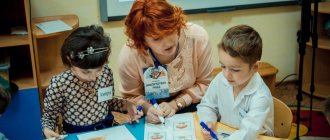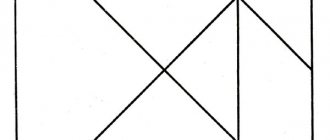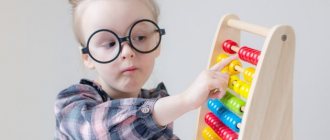Preview:
Topic: Drawing various objects based on circles.
Goal: To develop children's creative abilities through the use of multimedia technologies.
Objectives: To activate the images and representations available in the experience of children, correlating them with the task at hand.
Foster a sense of mutual assistance, moral qualities (kindness, responsiveness)
Materials: interactive whiteboard, two projectors, video camera, sand drawing table, sand, “Visiting the Cheerful Pencil” notebooks with an electronic manual, colored pencils, wet wipes.
I Introductory and motivational stage.
Teacher: Guys, today we have gathered for a very important matter. We received a video letter from the residents of the Round Country. Let's get a look.
Video letter: Hello dear guys! We are residents of the Round Country. Previously, we were colorful, beautiful round objects, but an evil witch bewitched us and we became white circles. To disenchant us, we need to be completed and painted. We look forward to your help. Help us please!
Teacher: We will definitely help you. Really, guys? What do we need for this? (Colored pencils) But we don't have colored pencils. But our friends Sandmen sent us sand. Maybe he can help us? After all, you can draw with sand.
II Operational and content stage
Children stand around a box of sand.
“Diving” into the sand - burying your hands, pouring from hand to hand, etc. What kind of sand is in the box? (Dry.) Immerse your hands in it. What do you feel? (Children describe their feelings.)
The teacher invites the children to think and remember which objects are round (you can ask them to close their eyes) and draw them with sand on the table. (Children's drawings are projected onto the screen using a video camera). At the end of the work, the children tell what they depicted.
Cheerful Pencil: Hello, guys! I asked the Sandmen to send you crayons. Look closely in the sand.
Children find colored pencils in the sand that the Sandmen prepared.
Cheerful Pencil: Guys, take your notebooks and open page number 4. These are our circles of friends who have been bewitched by the Evil Witch. Count how many of them you have on your sheet? That's right, five. You must complete and color each circle to create different objects. Be careful.
Teacher: Does everyone understand the task? Let's get to work.
III Reflective-evaluative stage
Examination of children's works. The teacher invites the children to tell what they depicted.
Teacher: Guys, we received a video letter from the residents of the Round Country, let's take a look.
Video letter: Dear guys, thank you very much for your help! The evil witch will never be able to bewitch us again. Goodbye!
Teacher: Guys, who helped you and me? (Sandmen, Merry Pencil). You see how many friends we have, without them we couldn’t cope with you! Is it good when a person has so many friends?
Children leave the classroom to the song “If you went on a journey with a friend.”
Source
Preview:
M municipal autonomous preschool educational
institution of the city of Nizhnevartovsk kindergarten No. 61 “Nightingale”
Unconventional drawing technique using an interactive whiteboard
Tikhonova Elena Petrovna
teacher of MADOOU DS No. 61,
highest qualification category
Nizhnevartovsk, 2022
Explanatory note of the project
Currently, computer technologies have become actively used in the educational process. According to Oracle education and science project manager Yuri Gorvits: “. you need to teach not what is, but what will be... "In an informatized society, without mastering basic computer literacy and the ability to use computer tools to solve certain problems, the realization of human creative potential in modern science, culture, production, business and other spheres of life is unthinkable . The term “active methods and forms of learning” has long been used in pedagogical practice. It unites a group of pedagogical technologies that achieve a high level of student activity. Recently, another term has become widespread - “interactive learning”.
The use of interactive technologies is one of the effective ways to increase motivation and individualize children's learning, develop their creative abilities and create a favorable emotional background. The use of interactive technologies allows us to move from an explanatory and illustrated method of teaching to an activity-based one, in which the child takes an active part in this activity. This is what contributes to the conscious assimilation of new knowledge.
Justification of the need for the project
I believe that the introduction of computer technologies in a new and entertaining form for preschoolers helps solve problems of speech, mathematical, environmental, aesthetic development, and also helps to develop memory, imagination, creativity, spatial orientation skills, logical and abstract thinking.
Project goal: Increasing the efficiency of the educational level by acquiring skills in using information technology; creating a stimulating learning environment that promotes children's social and cognitive development.
Expected result: Increase the efficiency of the educational process with preschool children.
A computer is, first of all, a tool that can give the learning process a natural, unformalized character. A computer can change the nature of learning - not something specific, but learning in general - making it more interesting and effective, and the knowledge gained - deeper and more generalized. The starting points here are the natural curiosity of children and the means to satisfy this curiosity. There are several types of motivation for children to use the computer:
The use of information technology by children allows them to more effectively solve the tasks of the child’s general, intellectual development. Special computer programs allow children to develop abstract, logical, operational thinking, and the ability to predict. They give the child the opportunity to change the solution strategy at his own discretion, use different levels of complexity of the material and other types of computer assistance.




